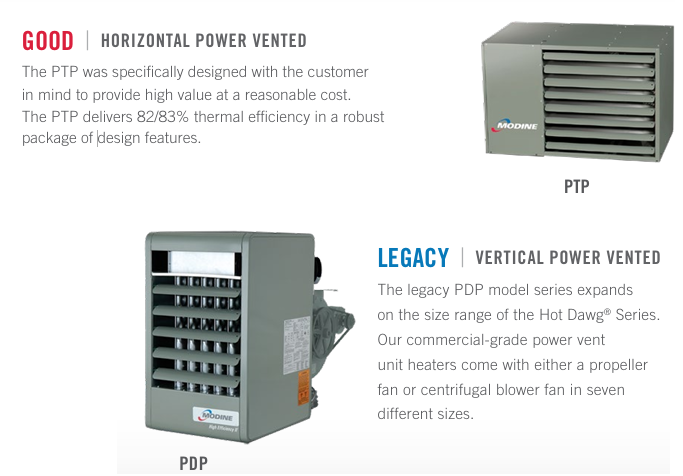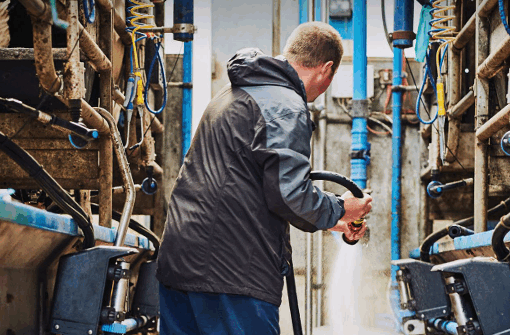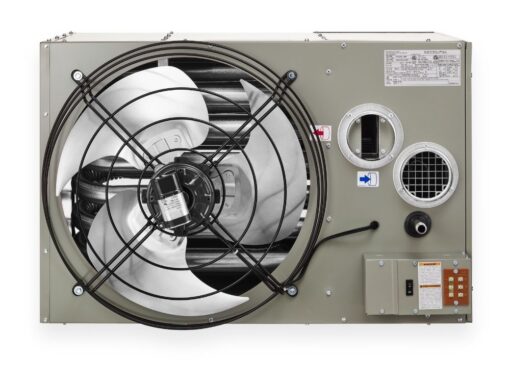Understanding the Difference
When selecting a gas-fired unit heater, one of the most important design choices involves the type of heat exchanger. Most manufacturers use either a clamshell or tubular heat exchanger. While both serve the same basic function of transferring heat from the burner to the surrounding air, their construction can impact performance, efficiency, and long-term reliability.
Clamshell Heat Exchangers
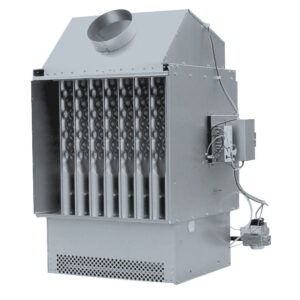
Clamshell-style heat exchangers have been a trusted design for decades. Each heat transfer cell is made by welding together two stamped metal halves, forming a shape that resembles a clamshell. As the heater runs, both sides of the clamshell heat up and expand.
Ideally, both halves expand at the same rate. However, in real-world conditions, one side may heat and expand more quickly than the other. This uneven expansion can create stress along the weld seam. Over time, repeated stress cycles may lead to cracking at the welds or along the heat exchanger itself.
Even with this limitation, clamshell units still serve an important role, especially when replacing older equipment. Their more compact design often fits better in tight spaces where newer models may not.
Tubular Heat Exchangers
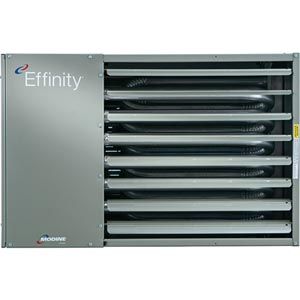
Tubular heat exchangers are built using single-piece metal tubes that carry hot combustion gases through a curved, efficient layout. Because each tube is formed from a continuous piece of metal, it expands uniformly when heated. This even expansion helps minimize thermal stress, resulting in a stronger, longer-lasting design.
Compared to clamshell models, tubular heat exchangers typically offer:
- Higher thermal efficiency
- Longer service life with fewer mechanical failures
- Enhanced warranty coverage due to superior durability
Their robust construction makes them ideal for environments that demand reliable performance over the long term. Tubular units are also a popular choice for energy-conscious facilities aiming to reduce operating costs and minimize downtime.
While these units may have different dimensions than some older models, they are widely supported by modern mounting and venting options. In many cases, transitioning to a tubular unit is a straightforward upgrade that delivers lasting value and improved performance.
Key Considerations When Choosing Between Clamshell and Tubular
-
Efficiency and Longevity
Tubular heat exchangers are typically more efficient and less prone to cracking or failure. Their simple, continuous design means fewer stress points and fewer components that can wear out or corrode over time.
-
Replacement and Fit
If you are replacing an older unit heater, a clamshell design may be the better option in some cases. These units tend to be smaller and may fit better into the existing footprint without requiring major changes to support systems or ductwork.
-
Venting Requirements
Different heater designs often come with different venting requirements. If you are switching from a clamshell to a tubular model, or vice versa, be sure to review the venting specifications carefully. You may need to adjust or replace the venting system to meet the new unit’s clearance and sizing guidelines. Always consult the manufacturer’s installation manual before starting the replacement.
Both clamshell and tubular heat exchangers have unique advantages. Tubular models are often the better choice for new installations thanks to their durability and energy efficiency. Clamshell designs, on the other hand, may be the right fit when space is limited or when replacing a similar existing unit.
Not sure which option makes sense for your facility? ChopAir can assess your needs and recommend the best solution based on your layout, performance goals, and installation constraints.

